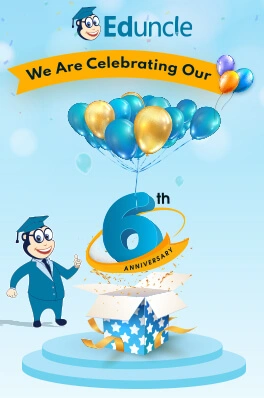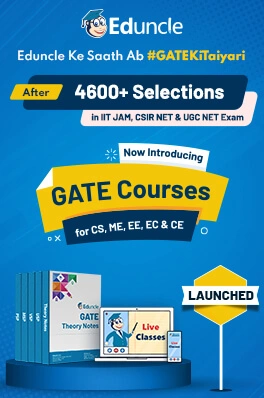Time management is very much important in IIT JAM. The eduncle test series for IIT JAM Mathematical Statistics helped me a lot in this portion. I am very thankful to the test series I bought from eduncle.
Nilanjan Bhowmick AIR 3, CSIR NET (Earth Science)- UGC NET
- Library and Information Science
Conservative, moderate and liberal theories of reference service are propounded by
Choose Your Answer:
- 0 Likes
- 2 Comments
- 0 Shares
-
![comment-profile-img]() >
>
Eduncle Best Answer
Types of Reference and Information Service: The emergence of the internet extends the reference librarian's ability to provide diverse and complex services and potentiality to show their real professional expertise to meet the demand put on them.
(a) James I Wyer Theories: In considering the scope of reference services, James I Wyer proposed three theories of reference service i.e. conservative, moderate and liberal. Samuel Rothstein called them minimum, middling, and maximum.
(i) Conservative: It includes giving occasional personal assistance to the inexperienced and bewildered reader. It limits the help to pointing the way only and so it is traditional in nature.
(ii) Moderate: The moderate reference service goes beyond providing mere instruction to actually helping the reader in using the book or finding the document and facts, etc.
(iii) Liberal: It includes the provision of the full and direct supply of reliable information to the readers.
(b) Edward B. Reeve's Categories: Edward B. Reeve and others have categorized the activities of reference staff into the following five categories on the basis of related functions.
(i) Instructional Activities: These are characterized by explicit teaching function.
(ii) Skill Maintenance Activities: These are related to up-dating the knowledge of reference tools.
(iii) Patron Service Activities: This deals with providing information to the users of the reference service.
(iv) Maintenance Activities: These are house keeping activities.
(v) Surrogate Activities: These are those activities which the reference staff perform on behalf of the other departments / sections of the library.
(c) Dr. S. R. Ranganathan's Classification: Dr. S. R. Ranganathan identified two aspects of reference work – Ready reference service and Long range reference service.
(i) Ready Reference Service: Most of the ready reference services are of the nature of fact finding types that can be finished in a very short time – in a moment if possible. The librarian generally uses reference book for providing such kind of services. The need of ready reference services arises from the fact of the complex nature of a reference book, its artificiality, and arrangement of information. The eminent person, foreign dignitaries or scholars generally approach for such type of services. Sometimes some regular customers also need the fact finding reference service because of shortage of time on their part.
(ii) Long Range Reference Service: The long range Reference Service is based on consulting every possible source of information to arrive at the required information; as such, it is not possible to render this type of service immediately. The time needed may range from half an hour to weeks. The search in the long range reference service starts at the reference books and then goes to the ordinary books, pamphlets, reports, articles in periodicals, etc. If the information is not available in the library then the search can even go to other local libraries and occasionally to the other libraries in the country. The long range reference service provided today can become the ready reference service tomorrow, as by this time the reference librarian will be able to locate the material quickly from his past experience. Slowly, the scope of long range reference service started expanding. Now bibliographical service, referral service, translation service, etc. are considered long range reference services.
(d) American Library Association's Categorization: In 1942, the American Library Association undertook a series of library job analysis. This association has stated the following six functions of Reference Service
(i) Supervision Function: This function consists of the proper organization of facilities, reference section, selection of reference materials, direction of personnel, and study of the library clientele.
(ii) Information Function: There should be an Information Desk where enquiries are received and routed to proper section. The Reference Librarians should be prepared to answer all types of questions and should be able to produce the sources that would answer the questions.
(iii) Guidance Function: The Reference librarian should be able to recommend a good book for respective fields. He should be able to give guidance to the readers regarding higher education, career related information or profession or vocation. He can also give guidance to the readers in the location of the document, in the choice of books and other reading materials.
(iv) Instruction Function: The Reference librarian should instruct the readers about the working of the library, the location of the material, the use of the catalogue card, the reference book, etc. An initiation or orientation programme should be arranged to familiarize the readers with the library practices and procedures.
(v) Bibliographic Function: There should be a preparation of bibliographies of interest to the readers so that they are able to know about the books and other reading materials required for their respective subjects.
(vi) Appraisal Function: The libraries should possess the right kind of materials and reference collections and the staff should be able to get the most out of it.
Do You Want Better RANK in Your Exam?
Start Your Preparations with Eduncle’s FREE Study Material
- Updated Syllabus, Paper Pattern & Full Exam Details
- Sample Theory of Most Important Topic
- Model Test Paper with Detailed Solutions
- Last 5 Years Question Papers & Answers
Sign Up to Download FREE Study Material Worth Rs. 500/-


















Harsimran kaur
krishan kumar